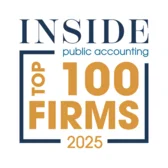Updated August 1, 2025
Opportunity Zone Program 1.0 (2017-2026)
The Opportunity Zone (OZ) program, introduced under the Tax Cuts and Jobs Act of 2017, was designed to encourage economic development and job creation in distressed communities through significant tax incentives. Investors can defer and potentially eliminate capital gains taxes by investing in Qualified Opportunity Funds (QOFs). Since its inception, the program has evolved considerably, with legislative updates refining its application.
The OZ Program was designed, with input from a variety of billionaires, economic development experts and creative legislators. The objectives of the program include:
- Attracting funds into one of the over 8,700 underserved communities where poverty levels and unemployment are above average.
- Encourage taxpayers with a large concentration of assets to liquidate all or a portion of those assets, thereby triggering a tax gain that can be deferred (for federal and the vast majority of states) for a period of time if timely reinvested into a Qualified Opportunity Zone Fund (QOF).
- Rewarding long-term investors with tax-free gains on exit for federal (and the vast majority of states) provided the taxpayer follows the relatively flexible OZ Program guidelines and reinvests the capital gains into a real estate project or operating business within one or more of the 8,764 current OZ federal census tracts.
Every state (including those not adopting the program) has OZ census tract eligible for OZ investing. The higher the population the more OZ census tracts. Therefore, California, Florida and New York have the largest number of OZ-eligible census tracts. To explore where these tracts are located, you can view the National Opportunity Zone Map provided by Novogradac.
Opportunity Zone Program 1.0 (2027 and Future Years)
The House introduced their first draft of OZ 2.0 legislation on May 12, 2025, and the Senate made additional changes over the following weeks. In summary, the OZ legislative proposal winds down the current OZ program after 2026 and the OZ 2.0 will become effective January 1, 2027 – with new census tracts designated (including a focus on rural census tracts), re-introduction of the 5-year 10% basis increase, plus additional OZ Fund reporting and other fine-tuning. While the permanency of the OZ program, along with other enhancements, are welcomed by the OZ community, the One Big Beautiful Bill Act (OBBBA) does not include many proposals advanced by the OZ community over the past few years.
Does it still make sense to invest under OZ 1.0?
As a result of the new legislation, OZ 2.0 will offer taxpayers additional benefits as compared to investing into OZ 1.0 prior to 2027. However, if a taxpayer generates a taxable capital gain in 2025 or the first half of 2026 that cannot be deferred into the OZ 2.0 funding start date (January1, 2027), there are still a number of compelling reasons to roll the gain into an OZ fund. Read more about the benefits of still investing under OZ 1.0 here.
1. Full Bonus Depreciation Reinstated for QOF Assets
While not part of the OZ legislation, the House has also introduced improved Bonus Depreciation, which is helpful for OZ Investors. Full bonus depreciation (100%) is reinstated for assets placed in service on or after January 19, 2025. Section 179 Expensing is now eligible for assets placed in service after December 31, 2024.
- Section 179 expense increased from $1 million to $2.5 million.
- Property acquisition limit increased from $2.5 million to $4 million. This benefits both QOF direct investments and QOZBs acquiring eligible tangible property. Note: the taxpayer must generally have debt basis in order to claim the deprecation and other losses.
2. Expanded Opportunity Zone Designations – Round Two
A new round of OZ designations will allow states to nominate additional tracts, prioritizing rural areas:
- New designations effective from January 1, 2027, through December 31, 2033. These new OZ census tracts will be disclosed post-June 30, 2026. New census tracts designations will be made every 10 years, next in 2036 and 2046.
- Contiguous urban tracts are not eligible under this new designation, but can still be under the rural OZ program.
- Designation authority rests with state governors, with federal oversight and limitations on total designations.
3. “Substantial Improvement” Test Relaxed for Rural QOF Projects
To spur investment in rural zones, the substantial improvement requirement for building improvements is reduced from 100% to 50%.
- Especially impactful for multi-family and light commercial rehabs, where capex needs were previously a barrier to qualification.
- Note that rural OZ Funds must have at least a 90% rural property component to obtain the additional rural benefits.
4. Redefined “Low-Income Community” Standards
Section 1400Z-1(c)(1) is amended to broaden qualifying areas:
- Changes the threshold in IRC §45D(e)(1)(B) from 80% to 70% of median family income relative to the surrounding area.
- Excludes certain “adjacent” higher-income census tracts that previously qualified, tightening the program’s focus. Under the rural census tracts, adjacent census tracts may qualify.
5. Puerto Rico Census Tract Revisions (Effective December 31, 2026)
The Bill will modify post-2026 census tracts for Puerto Rico to limit OZ designations similar to other guidelines. 98% of Puerto Rico is currently OZ-eligible under more liberal guidelines.
6. 10% and 30% Basis Step-Ups Restored and Expanded
The original 10% basis increase (for 5-year investments) is reinstated for contributions made after 2026 and before 2034.
- An enhanced 30% basis step-up applies for qualifying rural OZ investments, improving exit economics.
- This rewards longer-term rural investors and partially offsets the capital gain inclusion.
7. Rolling Gain Deferral Period for 5 Years from QOF Funding Date(s)
Investments made in the new round of zones after December 31, 2026, will defer recognition of the original capital gain on a rolling five-year schedule.
For example, a taxpayer making a QOF investment on April 1, 2027 will recognize the deferred gain on April 1, 2032.
- The prior deferral deadline under OZ 1.0 remains December 31, 2026
- Allows planning flexibility for both investors and fund managers under the extended investment window
8. Winding Down of Initial OZ Designations
The original 2017 OZ census tracts remain in effect only through December 31, 2026, unless renewed or supplemented.
- This means investors must act quickly to take advantage of the initial zones before the cutoff date.
- Some “transition” rules may apply for active investments already in place.
9. Strict New Disclosure and Compliance Requirements
Opportunity Zones 2.0 introduces tougher penalties and expanded disclosures for QOFs and QOZBs:
- Enhanced reporting of social and economic outcomes.
- Failure to comply may result in stiff penalties, disqualification, or audit scrutiny.
- Likely includes electronic filings, annual statements, and beneficiary impact reporting.
10. Election Mechanics Clarified for New Designations
Section 1400Z-2(a)(2)(B) has been updated to allow for proper election treatment for contributions made into newly designated zones.
- Investors may now make separate elections depending on whether contributions are made pre-2027 or post-2026, aligning with the dual-zone framework.
- Critical for structuring tiered or staggered investments across both designation periods.
- OZ investors can now elect to lock in their tax-free gain accrued through the 30th anniversary of their QOF investment date (without requiring a disposition as under the OZ 1.0 rules). Any appreciation accruing after such date will be taxable upon sale or other disposition.


